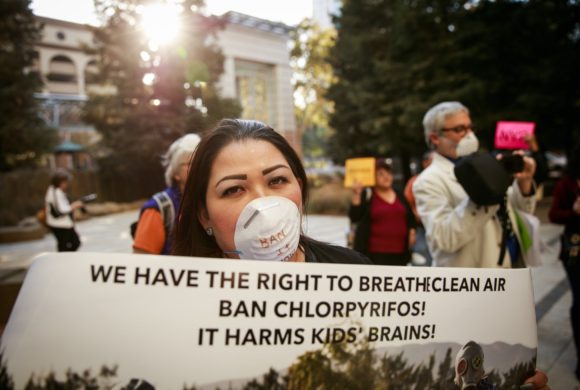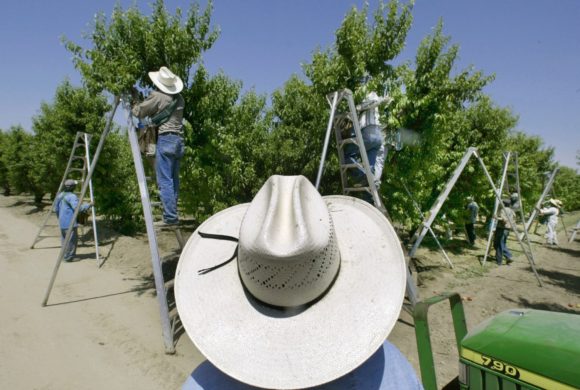
WASHINGTON — The Trump administration took a major step to weaken the regulation of toxic chemicals on Thursday when the Environmental Protection Agency announced that it would not ban a widely used pesticide that its own experts have linked to serious health problems in children.
The decision by Andrew R. Wheeler, the E.P.A. administrator, represents a victory for the chemical industry and for farmers who have lobbied to continue using the substance, chlorpyrifos, arguing it is necessary to protect crops.
It was the administration’s second major move this year to roll back or eliminate chemical safety rules. In April, the agency disregarded the advice of its own experts when officials issued a rule that restricted but did not ban asbestos, a known carcinogen. Agency scientists and lawyers had urged the E.P.A. to ban asbestos outright, as do most other industrialized nations.
In making the chlorpyrifos ruling, the E.P.A. said in a statement that the data supporting objections to the use of the pesticide was “not sufficiently valid, complete or reliable.” The agency added that it would continue to monitor the safety of chlorpyrifos through 2022.
The substance, sold under the commercial name Lorsban, has already been banned for household use but remains in widespread use by farmers for more than 50 fruit, nut, cereal and vegetable crops. In 2016, more than 640,000 acres were treated with chlorpyrifos in California alone.
Representatives of Corteva Agriscience, the maker of chlorpyrifos, did not immediately respond to a request for comment on the decision.

The Obama administration announced in 2015 that it would ban chlorpyrifos after scientific studies produced by the E.P.A. showed the pesticide had the potential to damage brain development in children. That ban had not yet come into force when, in 2017, Scott Pruitt, then the administrator of the E.P.A., reversed that decision, setting off a wave of legal challenges.
Those lawsuits culminated in April when a federal appeals court ordered the E.P.A. to issue a final ruling on whether to ban chlorpyrifos by this month.
Patti Goldman, a lawyer for Earthjustice, an environmental group that brought a legal challenge against the E.P.A.’s 2017 decision on behalf of farmworker organizations and others, criticized the decision. She said groups would sue again and ask the United States Court of Appeals for the Ninth Circuit to expedite the case.
“By allowing chlorpyrifos to stay in our fruits and vegetables, Trump’s E.P.A. is breaking the law and neglecting the overwhelming scientific evidence that this pesticide harms children’s brains,” Ms. Goldman said in a statement.
Representatives of the chemical industry expressed satisfaction with the decision. “The availability of pesticides, like chlorpyrifos, is relied upon by farmers to control a variety of insect pests and by public health officials who work to control deadly and debilitating pests like mosquitoes,” Chris Novak, chief executive of CropLife America, said in a statement.
Hawaii banned chlorpyrifos in 2018. California and New York are considering similar actions. The European Commission is under pressure from consumers and environmental groups to ban the pesticide.
The Trump administration has issued several other decisions in recent months relaxing environmental regulations. This week, the E.P.A. acknowledged a new policy doing away with surprise inspections of chemical and power plants. The “no surprises” policy is aimed at fostering better working relationship between the agency and states, E.P.A. officials wrote.
Last week, the E.P.A. approved broad use of the pesticide sulfoxaflor, which is known to harm bees. And this year the agency announced curbs on a lethal chemical found in paint-stripping products that represented a weakening of a ban that the Obama administration proposed.

Leave a Reply